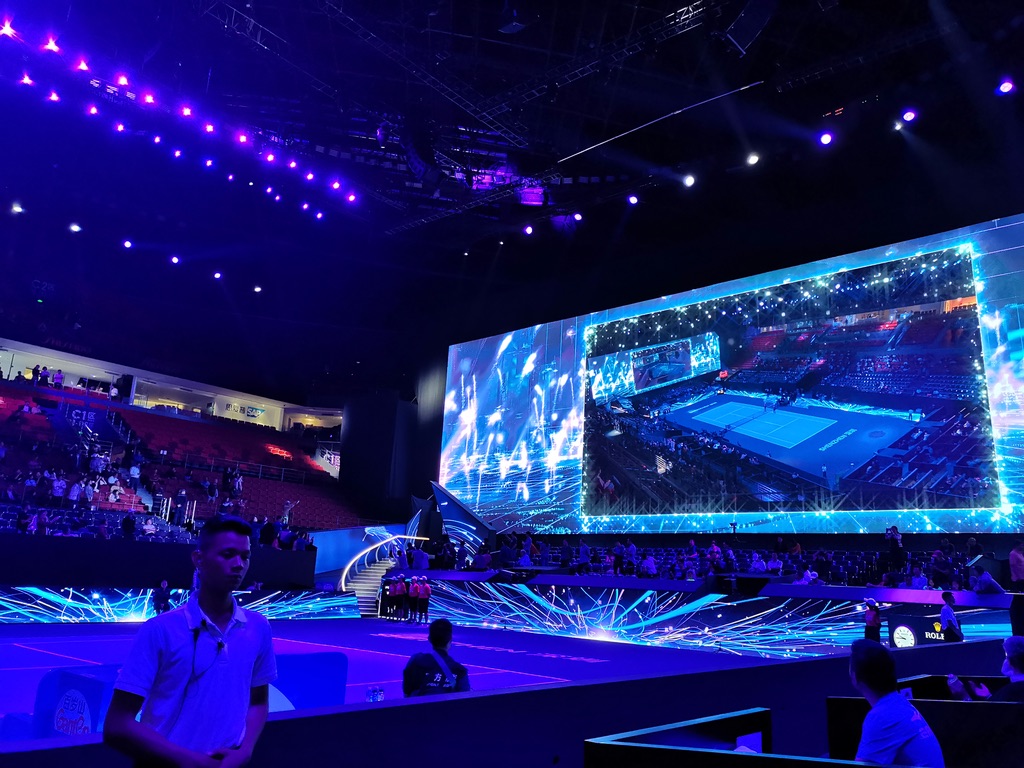In this finals, all audio signals and system control signals are transmitted by optical fiber network, among which audio main and backup signals are transmitted by DANTE network protocol, mainly considering the convenience and scalability of the system. The sound reinforcement system needs to cover the fixed seats of 12,737 people in the entire stadium and then increase the VIP area in the stadium. It needs to cover evenly and the sound pressure level is high enough.
In addition, the microphone uses the shure AD series, and uses the Quad-diversity function of AD to ensure the signal stability of such a large venue.
<< Case Review – WTA Finals 2019(1/2) – Lighting & Rigging

In addition to the sound reinforcement needs of the competition, this event also includes opening ceremony performances, entry of players and awards. Therefore, this system not only needs to meet the needs of the competition, but also has enough sound pressure level and dynamics to meet the performance needs. The German consultant team gave a more detailed design plan in the early stage, but due to the lack of detailed understanding of the site, we made adjustments according to the current situation of the site. 102 full-frequency speakers were used throughout the game, which were hung in 15 groups to meet the coverage of the audience area and the performance area of the competition area. 20 basses are used, and they are concentrated in the center of the field. This design helps the uniformity of the entire field and is consistent with the full-frequency sound.
Video System
The E2 Screen Management System raises the bar for real-time screen management, delivering superior picture quality, outstanding input and output density, massive scalability and durability. Supporting native 4K input and output, the system is the industry’s leading 4K screen management system that can manage refresh rates up to 60Hz, full 4:4:4 color sampling, and 12-bit processing.

The WATCHOUT control system edits, sorts and sorts the videos and pictures that need to be played in the event according to the overall event process, and can control and deploy the display server. (The content function of the backup machine is the same as that of the main machine, and it can be switched to the backup system in real time when the main machine has problems to ensure the smooth progress of the activities)
Create a perfect display screen effect for WTA events, show better visual effects, make the broadcast effect of the program smoother, and allow the audience to experience the high-quality picture effect brought by the point-to-point screen display.






